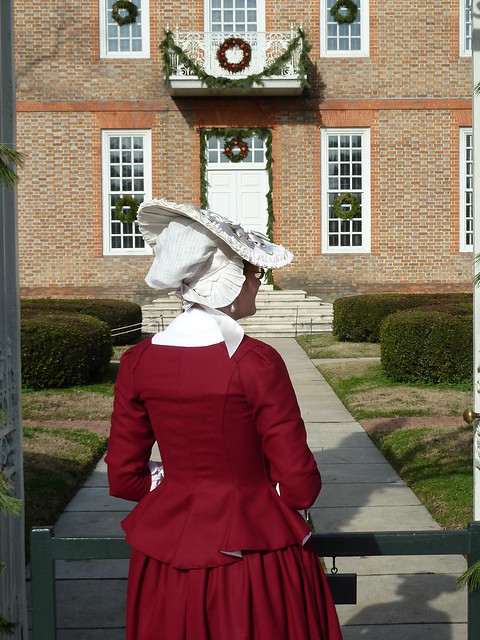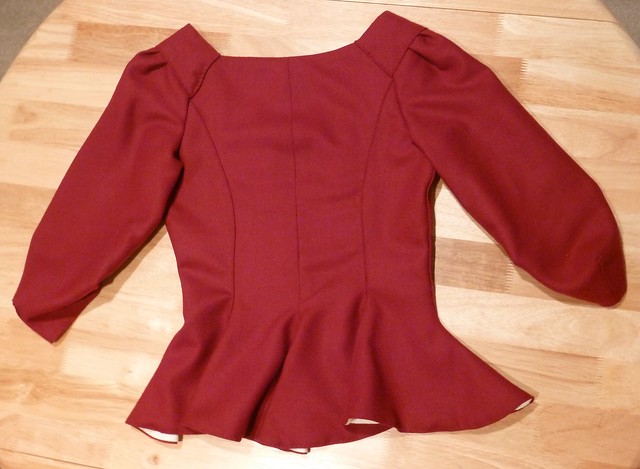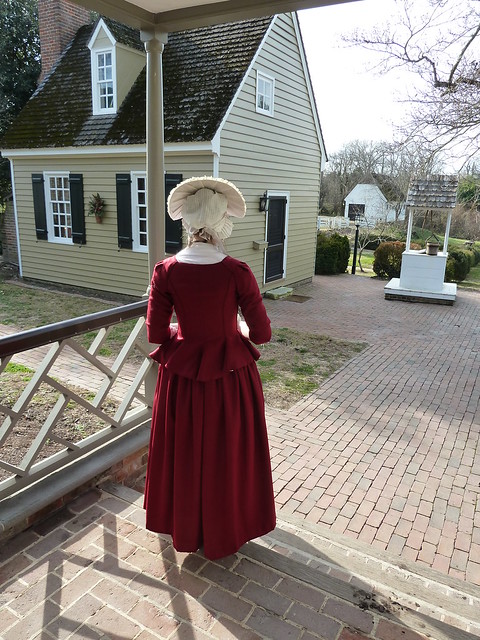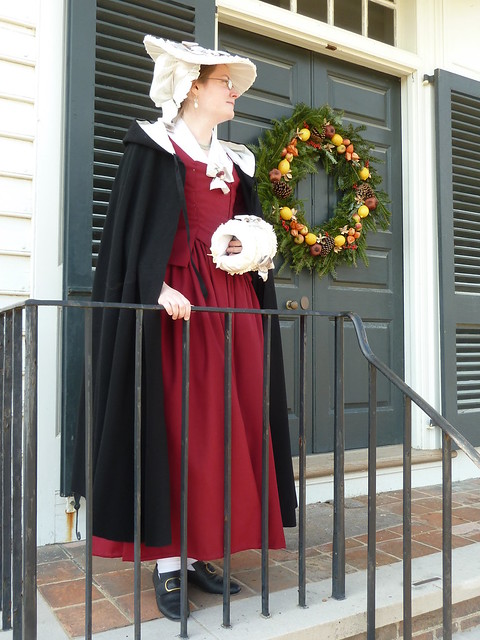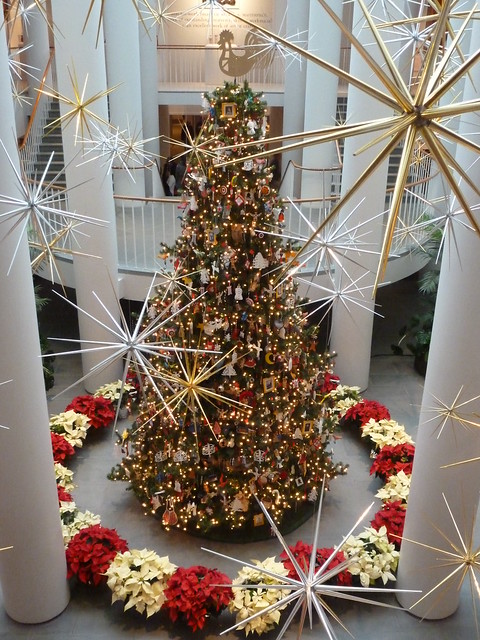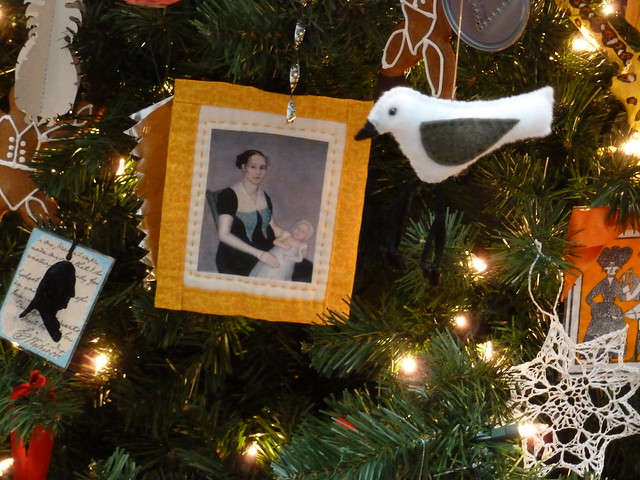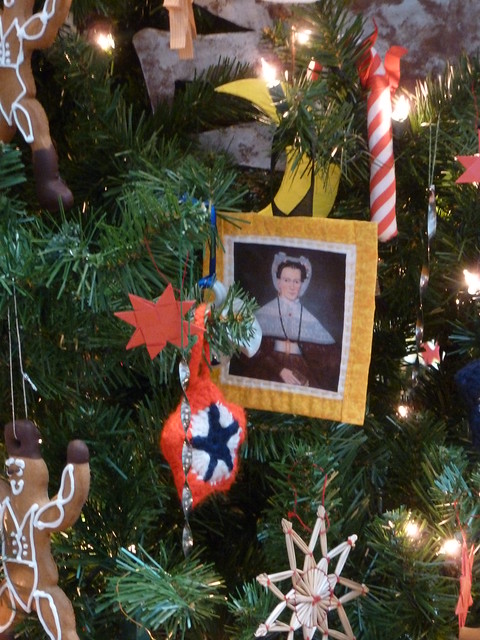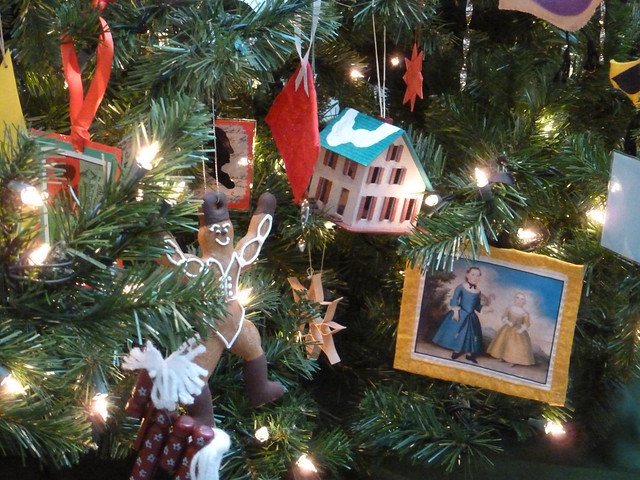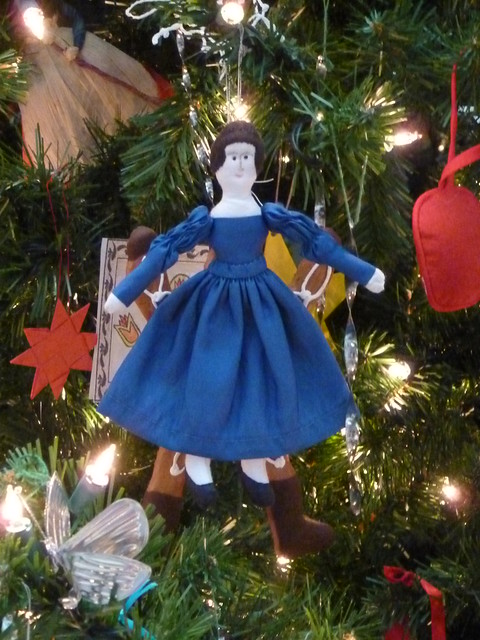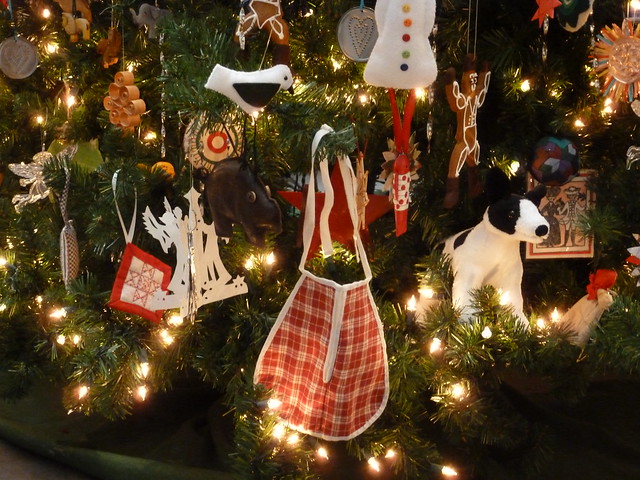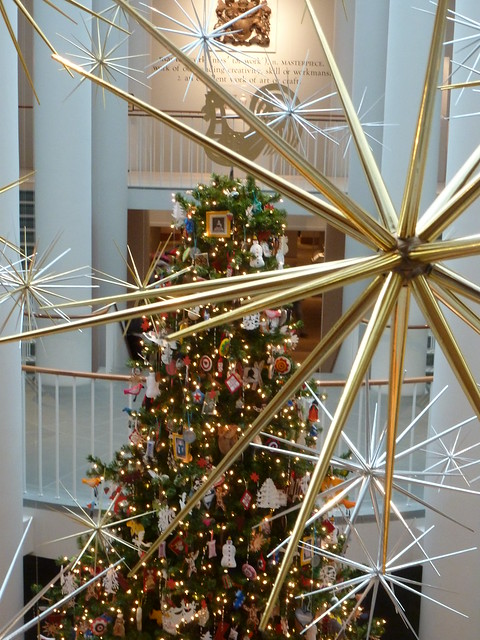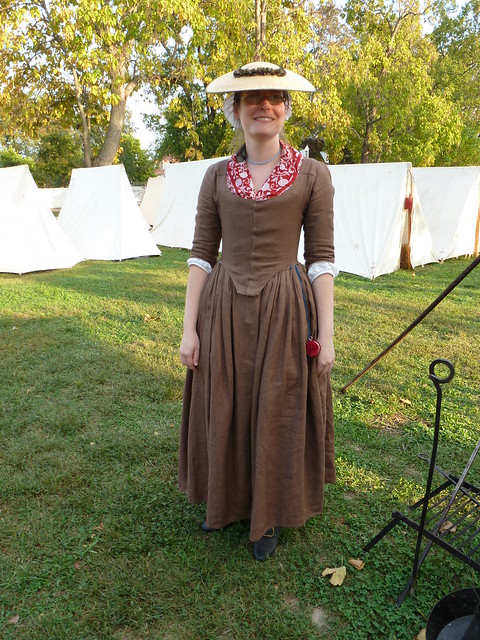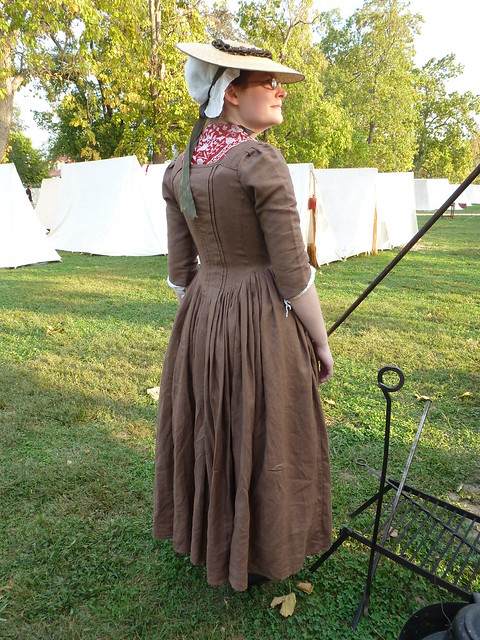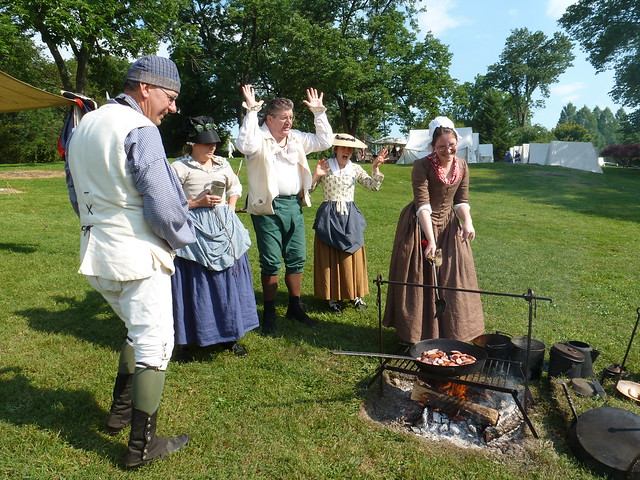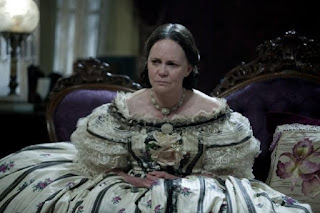Cranberry Red Wool Jacket
and Matching Petticoat,
1770s
Colonial Williamsburg, December 2012.
When I found out the family was making plans to spend Christmas week in Williamsburg, I decided I really wanted to make something new and festive to wear for the occasion. I didn't have much time because of work deadlines that stretched until 5 days before Christmas, so I had to choose a project I knew I could finish quickly in the little time I had. I elected to go with a matching jacket and petticoat combination for three reasons: 1) I already had a working jacket pattern that I knew worked well, so I didn't have to wait for Ashley to help drape and fit me something new; 2) a jacket is way faster than an entire gown; and 3) I had exactly 3 yards of cranberry cassimere wool that was the perfect holiday color! So in four and a half days (which included a loooong day in the car!), I put together this jacket and petticoat, just in time for Christmas!
Colonial Williamsburg, December 2012.
The pattern: The pattern for this jacket is largely based off of the same Janet Arnold "Jacket C" pattern that we used to make Ashley's gold linen jacket. I made the same alterations as before, cutting the front piece completely separate from the side/back piece, and including the gusset as part of that front piece, rather than stitching it in separately. And as with Ashley's jacket, I elected to use the sleeve pattern from the Costume Close-up jacket that I'd already tweaked to my measurements.
The primary difference in pattern between this cranberry jacket and Ashley's gold one (and the Arnold original) is that for this one, I elected to use a stomacher to close the front, rather than having the edges meet at center front. Unlike with my blue chintz version of the Costume Close-up jacket, which uses a stomacher laced into place, this one is pinned in in the same manner as a gown stomacher.
Construction details: As with all of our eighteenth-century sewing projects, this jacket and its matching petticoat are sewn entirely by hand. The construction details, as I mentioned in the gold jacket post, are almost identical to those featured in our jacket tutorial series, with the exception - as I mentioned above - that this jacket has a stomacher that pins into place to fill in the space at center front.
The front of the jacket with one side folded back to reveal the interior.
The front does not close at center front, but rather is filled in with
a pinned-in stomacher.
The stomacher front.
As with the original Janet Arnold jacket, and Ashley's gold one, this cranberry jacket also does not include slits at the front sides; rather, that added gusset piece (here integrated into the pattern of the front piece to save time) helps provide the extra space necessary to help the jacket flare over the hips and petticoats.
The back of the jacket, showing how the pieces are cut at angles
in the skirt to flare out at the waist over the petticoats.
A view from the back.
Colonial Williamsburg, December 2012.
The fabric: A to-die-for lightweight cranberry red cassimere wool from Burnley and Trowbridge that I couldn't resist when I saw it at the gown workshop. This wool is so soft and drapes so beautifully that I wish now that I'd gotten the rest of the bolt! The jacket is lined with a medium weight ivory linen.
Finishing the look: As you can easily surmise by the color choice, the picture poses, and the accessories, this ensemble was created specifically with Christmas wear in mind. It is worn over a linen shift, my blue-green wool fully-boned stays, and a linen underpetticoat. A striped cotton muslin neckerchief fills in the neckline, and my cap (almost impossible to see in most of the pictures!) is made of striped linen.
Colonial Williamsburg, December 2012.
In the pictures, I've complemented the outfit with ivory and pearl grey silk accessories: a hat, a muff, and a breastknot with a couple of paper flowers. These were actually created to go with another outfit that I didn't have time to finish, so I just went ahead and paired them with this one instead, and I ended up really liking the way they all went together. The black cloak in the picture below has its hood lined in the same ivory silk taffeta that is used on the hat and muff. Since I plan to do a separate post for the hat and muff, I'll save any more details on them until then!
Colonial Williamsburg, December 2012.
Additional images of this project can be found on its flickr page.


